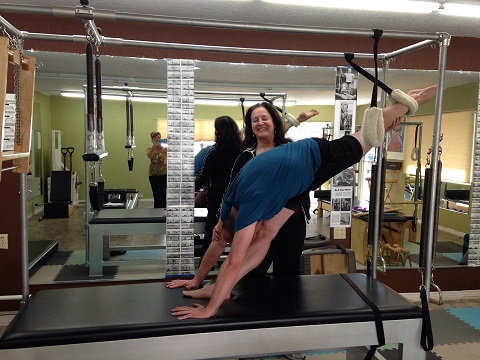Issue #459 – Wednesday, April 30, 2025
Poking the Classical Pilates Bear
by Brett Miller
Longtime readers of Pilates Intel know that I deeply appreciate the “classical” method of Pilates—by that, I mean the approach passed down through Romana’s lineage.
My original training was in Stott Pilates, a contemporary style that gave me an excellent foundation to continue my exploration of the method. But even then, something bothered me. We were trained to be so cautious, so protective, that all the vitality and spirit of Pilates felt drained away. One understood that Joe’s original method was “wonderful but unsafe.” As a result, we were encouraged to use endless pads and props, even for basic movements like toe taps.
B – O – R – I – N – G!
So when I visited Siri Galliano for my first real taste of classical Pilates—straight from the Romana lineage—I felt a shift. Her teaching introduced me to the concepts of opposition and two-way stretch. I was immediately hooked. This was the start of my classical journey, which continues to this day.

Yet, I never bridged over to become a classical teacher.
Why? Because, like any group bound by tradition, the classical Pilates world contains a certain degree of fanaticism—one rooted in fear and blind adherence. This can lead to irrational defensiveness and hostility toward any new ideas. Rules get treated as gospel, while the depth and beauty of the method are often lost in the shuffle. All of this in the name of ‘being true to Pilates’.
Here are three examples that highlight my concerns.
Reformer and Mat Transitions: Sacred or Sensible?
One of the most common refrains from classical die-hards is:
“The transitions are JUST AS IMPORTANT as the exercises.”
Really? According to whom?
Now, don’t get me wrong. Transitions can be great. They add fluidity, challenge, and beauty. But to claim they hold equal weight to the exercises themselves? That’s simply not true.
Take this example: You mount the Reformer any old way you want (not standing to sitting with your arms crossed) and execute an Overhead with great precision, your spine drinking in the movement. Then you skip the formal transition (AND the ‘holy’ order) and sit up to do Back Rowing, delving deep into opposition and two-way stretch. With those insights fresh in your body, you lie down again and repeat Overhead. Boom—new awareness, new depth, a greater understanding of Pilates.
That kind of detour? It can be life-changing.
And if you need external validation, watch this video of Joe Pilates working with Eve Gentry on the Reformer. Guess what’s missing? Transitions.
Spring Changing: Kindness or Heresy?
Brett Miller is the founder of Pilates Intel, he started his professional life in the world of ballet, working with various companies in the US. Later on he moved to New York and branched out into modern along with the ballet. Since then, he has lived in Finland and now in Stockholm Sweden.
Brett became a Pilates instructor in 2005 and has been teaching ever since. The intelligent technique that Pilates is, and the chance to continue to be physical, attracted him to this field after being so long in the dance world. Along with teaching Pilates and publishing Pilates Intel, Brett is a software developer for Ericsson.


